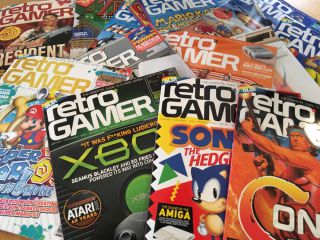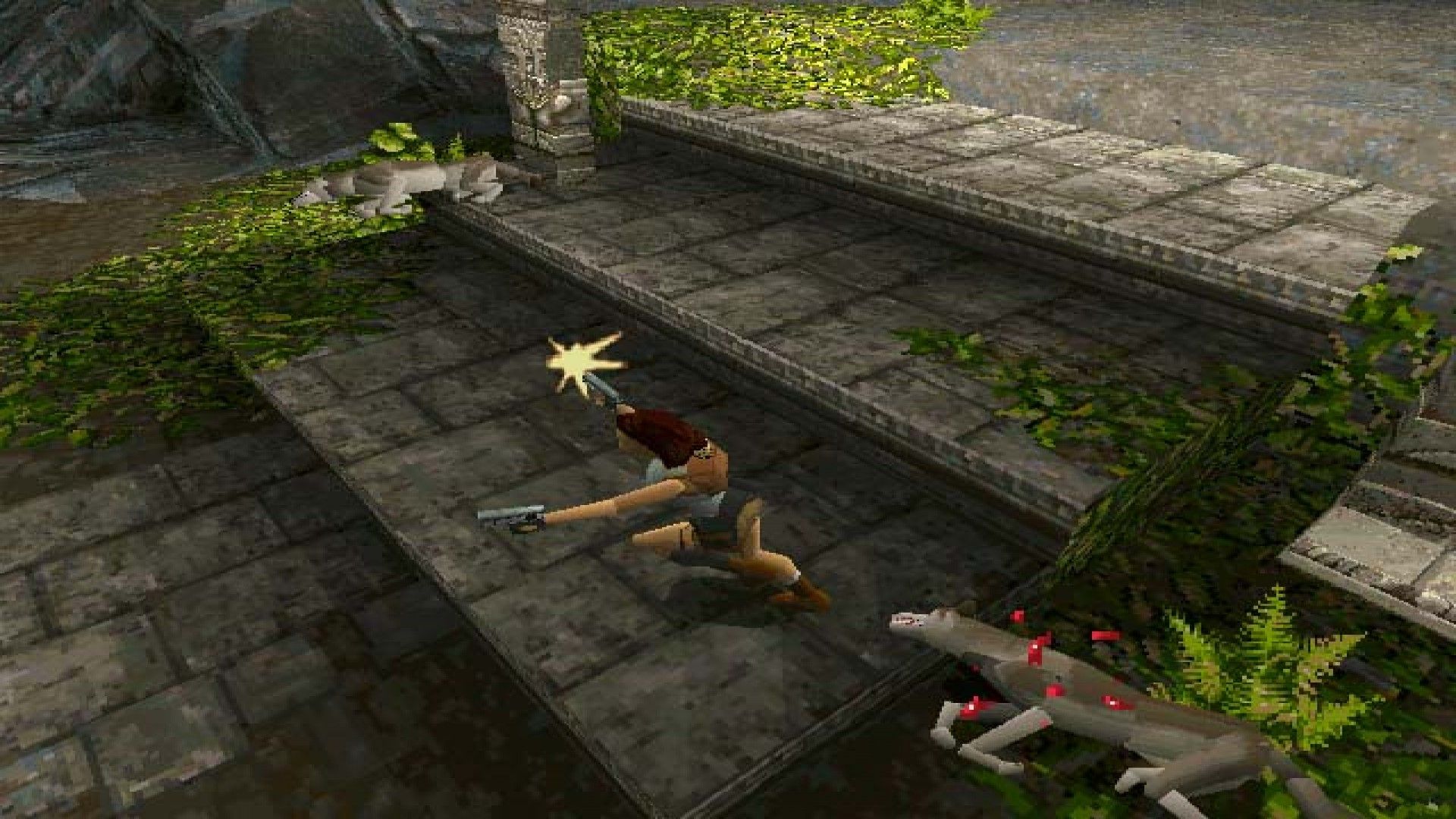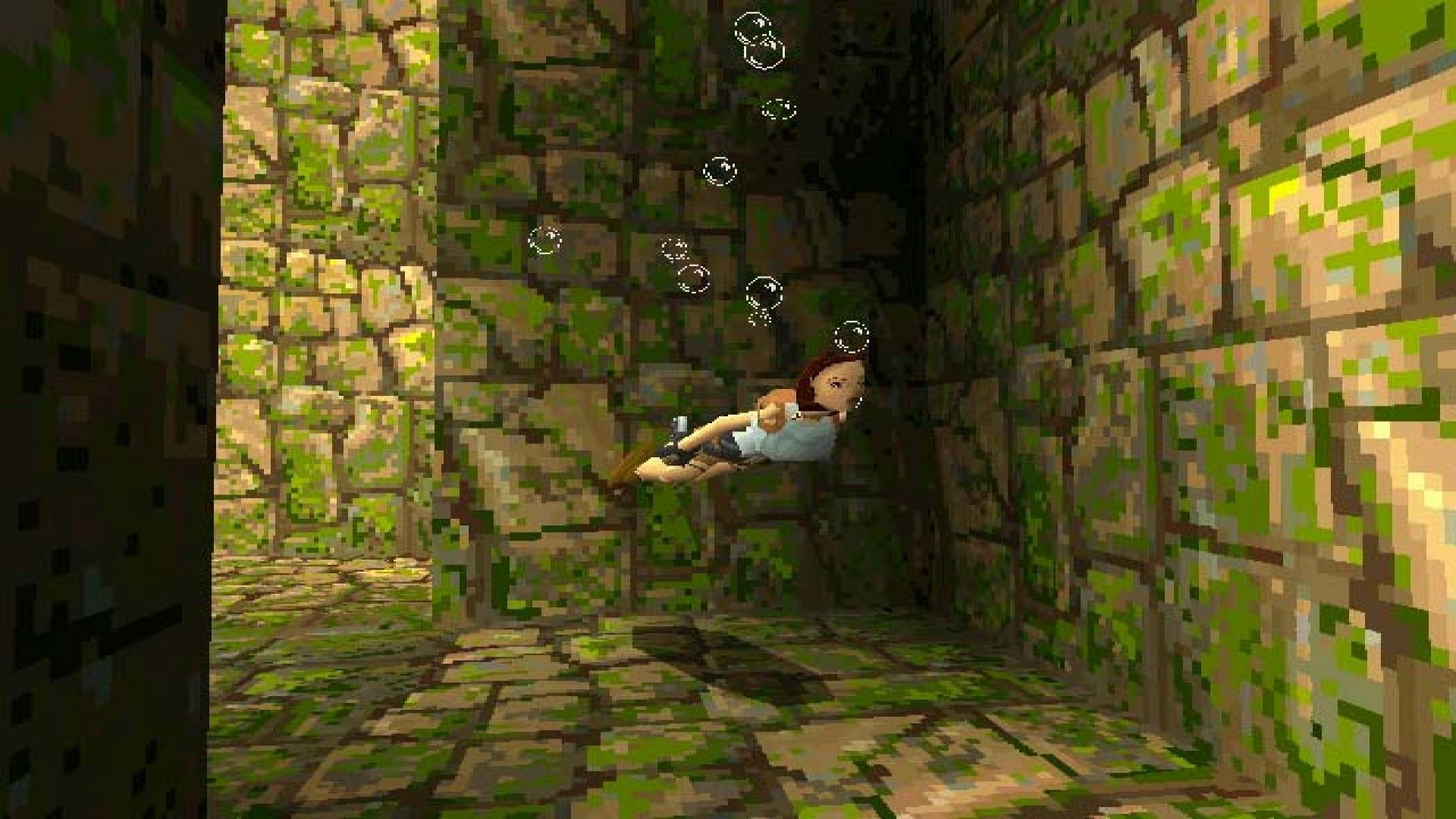The history of Tomb Raider
Retro Gamer talks to the developers behind the classic action adventure series.


Retro Gamer is an award-winning monthly magazine dedicated to classic games, with in-depth features from across gaming history. You can subscribe in print or digital.
Every so often we feature PC-focused articles from across Retro Gamer's long history. This history of Tomb Raider was originally published in issue 163 in 2016.
In the mid '90s, the games industry was short on icons, but there were plenty of characters to go around. You were hardly a developer if you didn't have your own ‘hero'—and Core Design had just spun the kart racer BC Racers off from its Chuck Rock series. Save for the loose tie of ancient history, that game might not have much to do with Tomb Raider but for a single name: Toby Gard.
As a talented young designer, Toby Gard had moved on from BC Racers with the vision to create a project unlike anything else at the time, and something that would become truly iconic. Tomb Raider was to be a 3D action-adventure game, distinguished by its female protagonist. Initially conceived as a South American adventurer by the name of Laura Cruz, she would eventually become the British aristocrat Lara Croft, an athletic and independent adventurer with a penchant for collecting ancient artefacts. While Lara wasn't the first female protagonist in games, this was still a bold choice—few games included strong female leads.
Dwelling on Lara Croft's qualities as a character, however, diminishes the fact that the choice to make a 3D action-adventure game was also bold. Not only was the project unlike anything else available at the time, the lead platform for the game was the Sega Saturn—a machine that would become well-known for its awkward and non-standard handling of 3D visuals.
"We were definitely trailblazing a lot of what we did on Tomb Raider," says Gavin Rummery, a programmer on the first two Tomb Raider games. "When Toby first described what he envisaged on my first day at Core, I wasn't sure it was possible because nothing like it existed." Of course, had that precedent existed, it wouldn't have been a big deal anyway. "We didn't think about looking at repeating something that had been done before, so had never considered needing other games for reference," recalls Heather Stevens, a graphic artist and level designer on the first two games.

It was an enormous departure from what Core Design had done before, and the team struggled with it. "What appeared the greatest challenge was how on earth we would create the actual environments and get Lara to interact with them," Gavin recalls. "Heather was attempting to build them directly in 3D Studio which could only edit in wireframe mode, but neither Paul [Douglas, programmer] or I had a clue how we could get a character to interact with freeform environments given the processing constraints of the day."
"The breakthrough was the decision to build everything on a grid," continues Gavin. "To me this was the point Tomb Raider became feasible and everything seemed to fall into place. Toby was able to define Lara's moves, Paul could get the control working, and I was able to build a level editor that Neal [Boyd, artist] and Heather could use to build and test the environments far quickly than would've been possible using 3D Studio."
Keep up to date with the most important stories and the best deals, as picked by the PC Gamer team.
The first Tomb Raider was such a rush. I think I had about three weeks to compose the music.
Nathan McCree
Getting the sound of the game right was important, and this was a task which fell to Nathan McCree—although given the amount of time he had to so, it might have felt rather more like it had fallen on him. "The first Tomb Raider was such a rush. I think I had about three weeks to compose the music. It was mostly a case of, write something and then figure out a way to use it later," he tells us. "What became apparent during the installation process was that the tunes worked best when placed in specific locations to describe a particular place or feeling at a specific moment in the game. And this gave birth to the idea of location-specific music." Nathan wasn't the only one feeling the pressure, as the whole team was battling a very tight deadline.
"It was tough developing Tomb Raider (long days etc.) but very rewarding," Heather confirms. This eventually led to extra staff being drafted in. "I was an animator and model builder working in the room next to the Tomb Raider team and also a good friend of Toby Gard," explains Stuart Atkinson, an artist who worked on the earlier Tomb Raider games. "He asked if I could help him out with enemy characters, being about four months from the deadline, the pressure was getting pretty serious and his workload was too much. So I jumped at the chance!"

Tomb Raider was released in October 1996 for the Saturn, followed by PlayStation and PC versions in November. It detailed Lara's quest to acquire the Scion Of Atlantis for the mysterious businesswoman Jacqueline Natla. The game was a critical success, and commercial success would follow. But though the team at Core Design was sitting on a hit, it didn't know it. "None of us knew it would be anything like the success it was," says Gavin. "We could tell it was getting favourably received, but it was only when we started seeing the actual sales figures that we realised just how big a success it was." Even the upper management wasn't aware that the game would be enormous. "The preview coverage had been very encouraging. A real buzz was building around Tomb Raider, but we were still prudent with our forecasts," says Ian Livingstone, then president and CEO of Tomb Raider's publisher Eidos. "I recall that we put a number in the budget of 100,000 units being sold. Little did we know that the first Tomb Raider would go on to sell over seven million units!"
I recall that we put a number in the budget of 100,000 units being sold. Little did we know that the first Tomb Raider would go on to sell over seven million units.
Ian Livingstone
While there's no doubt that the game was a team effort, one man's influence is often cited as a key factor behind the game's success. "Thanks to a very obstinate Toby Gard and his vision of a strong female heroine in a computer game, we can now appreciate the unique Lara Croft," says Heather. "Undoubtedly Lara was a huge aspect in the success of the game and the marketability of the product. She was a character that won the hearts of both male and female players. However the game was so much more than the character herself," she continues. "I think the key factor was Toby Gard," Stuart concurs. "It was his vision and he made sure everyone followed it through. He was also lucky with the team he ended up with, not only were they talented, they trusted and believed in him." However, that's not the only factor he credits. "And, of course, how amazing the first game was to play back in the day, it just blew me away."
Unfortunately, Toby Gard would not stick around for the success that followed. Creative differences drove a wedge between him and the management at Core Design, and he would leave the company without getting involved in Tomb Raider II, passing up enormous royalties in doing so. Most of the team remained and moved onto the sequel, which had to be ready in less than a year. Surely such a tight deadline was a pain? "Working on the sequel was a natural progression," Heather points out. "We had invested so much time and creativity into Tomb Raider that it would have been unthinkable to just walk away from it. It was action stations again for most of the team, and time to get our heads down again."
Externally, Lara Croft was already becoming a crossover star, a fact which brought the success of the first game home to the developers. "On the lead up to the release of Tomb Raider II, we had many more press and TV interviews, so things started to hit home for me," Nathan recalls. The Face featured a cover story on the character and her popularity. Rhona Mitra was gaining recognition as the ‘real life' Lara Croft, and she was already collaborating with Dave Stewart of the Eurythmics on music to be released under Lara's name. This exposure built anticipation for Tomb Raider II to a fever pitch, and Sony took advantage by signing an exclusivity deal with Eidos, ensuring that the PlayStation was the only console to receive it.

Back at Core, the team was busy trying to top what had gone before—even if it meant improving on finer details. "I was pleased to get Lara's ponytail working," says Gavin. "It had been dropped from the original because it just didn't work properly with all the acrobatic moves—it was more like she had an electric eel attached to her head that had a life of its own. But on TRII I came up with a way to get it working and was really pleased how natural it looked. The physics were ultra-simple and a complete cheat, but it did the job."
Other additions were far more substantial. Improvements to the graphics engine allowed for wide open outdoor spaces that hadn't been possible in the original game, and Lara was no longer restricted to travelling on foot. "Introducing vehicles was my idea, I'm quite proud of that," says Stuart. "I prototyped Lara riding a quad bike using only the animation editor—I replaced her run animation and attached a quad bike to her bottom—the in-game result gave you a pretty good idea how well it would work."
On the audio front, Nathan was able to make improvements as he was more involved in the development process. "With Tomb Raider II, I had a little more development time (about two months) and although I wrote twice the number of tunes, there was a plan in my head about how it was going to piece together," the composer recalls. "I expanded on the themes, establishing new motifs, but mainly focusing on this location-specific idea that had been born in the first game. The implementation improved as I demanded control on how and when each tune would be triggered."
One of the game's most memorable moments was actually born of the tight deadline. "The game was supposed finish after the dragon battle, but it didn't feel like a satisfying conclusion, so we came up with the idea of having an epilogue," Gavin explains. "Due to time constraints the idea of reusing Croft Manor was chosen, with just a pitch battle of Lara defending her home. Then my favourite bit—the ‘shower scene' where we got Lara to shoot the player—that was our response to the enquiries about nude cheats!"

